The Zetotype was an initiative to start a Czech version of the Linotype. This initiative became possible with the reparations after World War II. As a compensation for the war, the Czechoslovakian government was given original blueprints of various machines from German companies. Those blueprints included the German version of the Linotype, as well as the Heidelberg platen press. Both were provided to the State-owned Czechoslovakian company Zbrojovka Brno.
This firm successfully produced a platen press named the Zetapress, later renamed as the Grafopress. But only two prototypes of a Czech Linotype were made. Currently, it is unclear why the Zetotype wasn't put in mass production. A reason could have been that Czechoslovakia became a Soviet State in 1948, and that competition with the Russian Linotypes—produced by Ленинградский завод полиграфических машин ('Leningradskii zavod poligraficheskikh mashin', 'Leningrad printing machines factory', often abbreviated as 'Ленполиграфмаш' or 'Lenpoligrafmash') in Leningrad—was avoided.
While no Zetotypes were mass produced in Czechoslovakia, there are traces that the Zbrojovka Brno plant did produce Linotype matrices. The focus of the produced faces seemed to have been supporting a large number of languages written in the Latin script .
Only two prototypes of the dvouzásobníkový Míchač 'Zetotype'—the double tray Mixer Model 5c—were ever produced. It was almost an exact reproduction of the German Linotype Model 5c. Hence, both names cary the same code number. One Zetotype remains at the National Technical Museum of Prague:
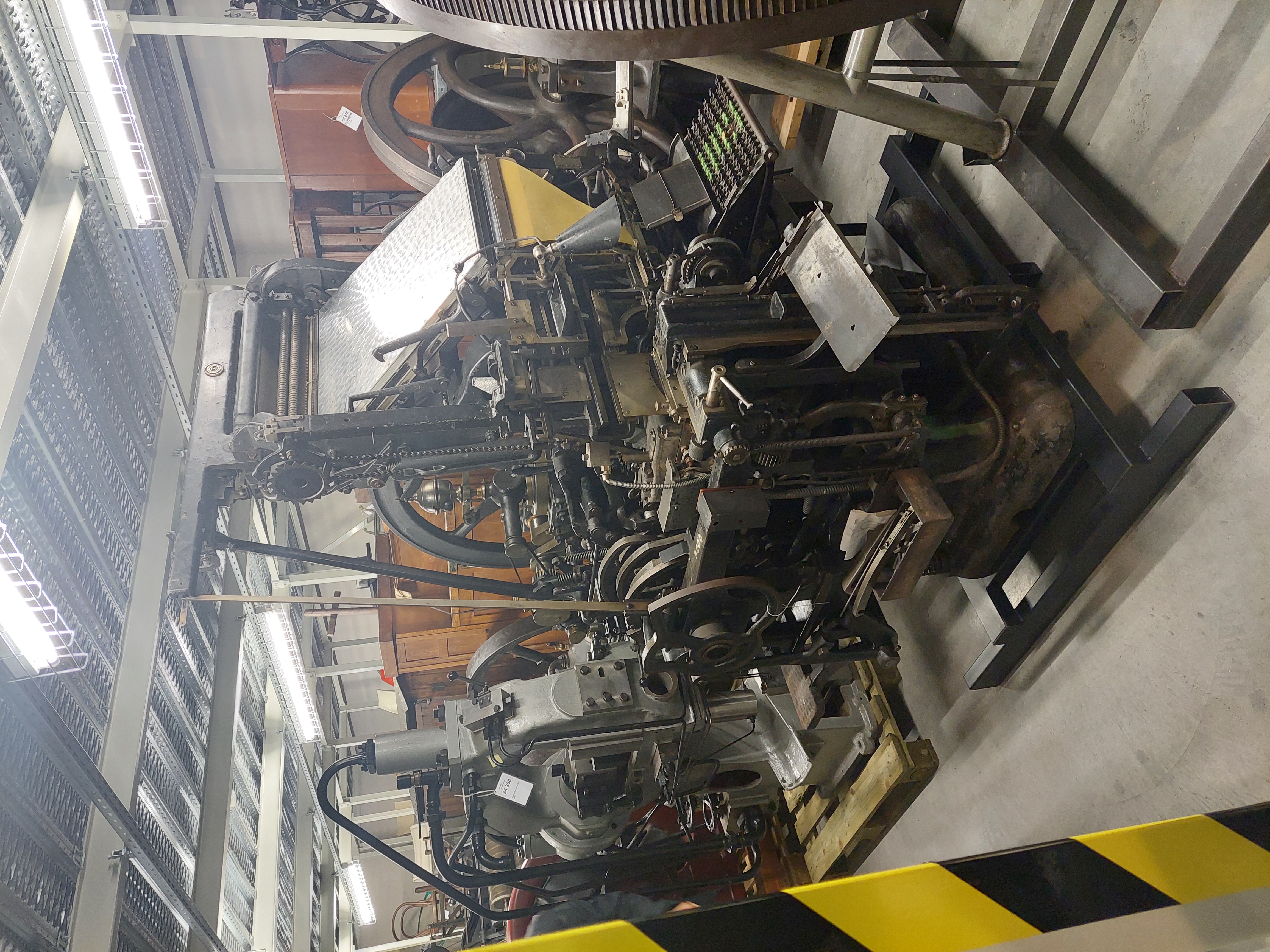
Photos: The Zetotype at the National Technical Museum, Prague, Czech Republic, Museum of Electrical Engineering and Media. Photos subject to agreements, no reproduction allowed.
Just like the Linotype Model 5c, the Zetotype is a mixer machine. This means that two magazines can be used at the same time. The double distribution is stacked on top of each other, which is also the reason for the extra height of this machine compared to several Linotypes. The two magazines could be mixed in one line, with a convenient handle on the right of the keyboard.

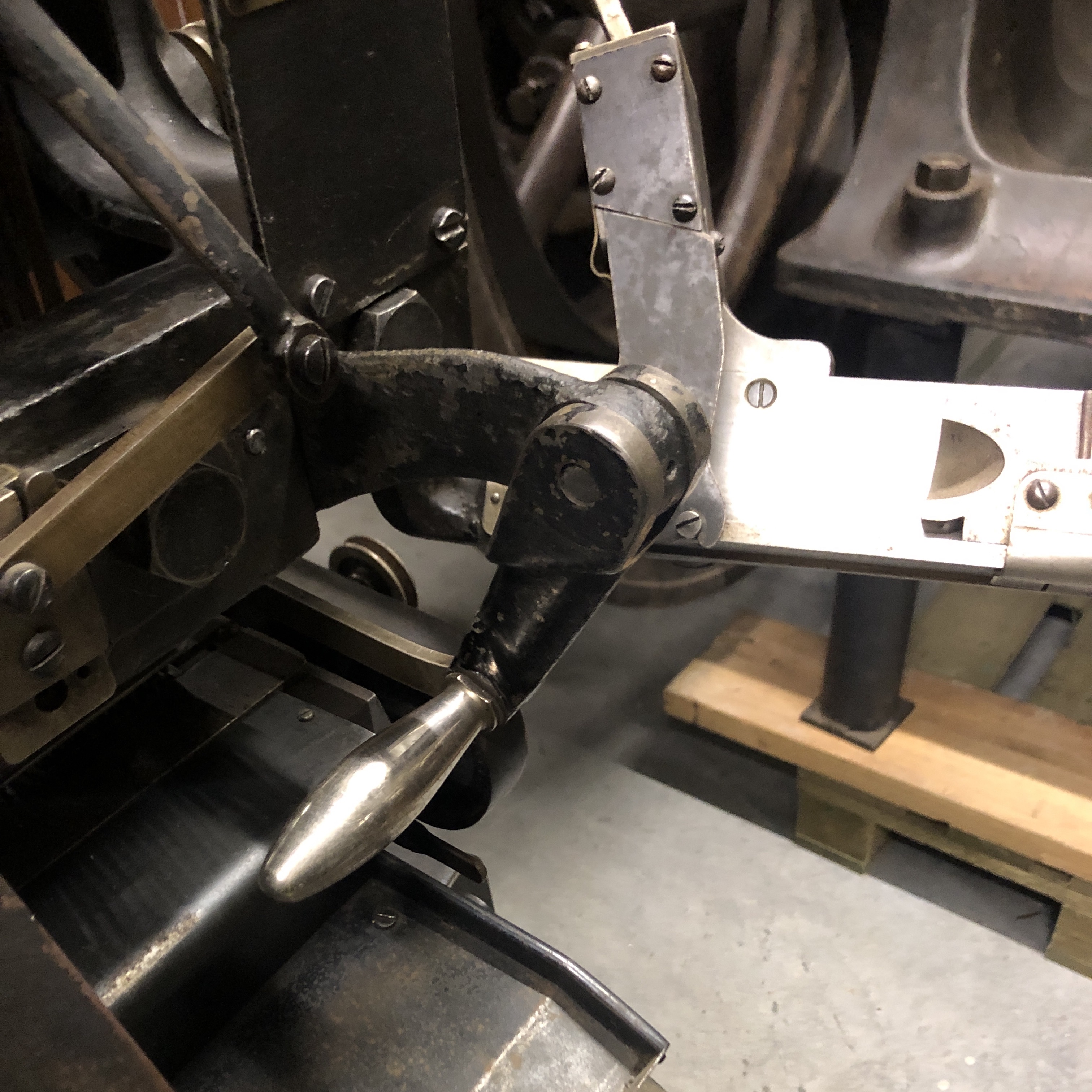
Photo: The distribution boxes of the Zetotype, stacked on top of each other. Property of the National Technical Museum, Prague, Czech Republic, Museum of Electrical Engineering and Media. Images subject to agreements, no reproduction allowed.
Other notesworthy details the covers, on the top part, and are how the second elevator is attached to the machine, which is different than on most other Linotypes. Its keyboard is strangely ornamented on its backside, and it has two suspensions on its bottom. Those detials are also present in the original German Linotype Model 5c.



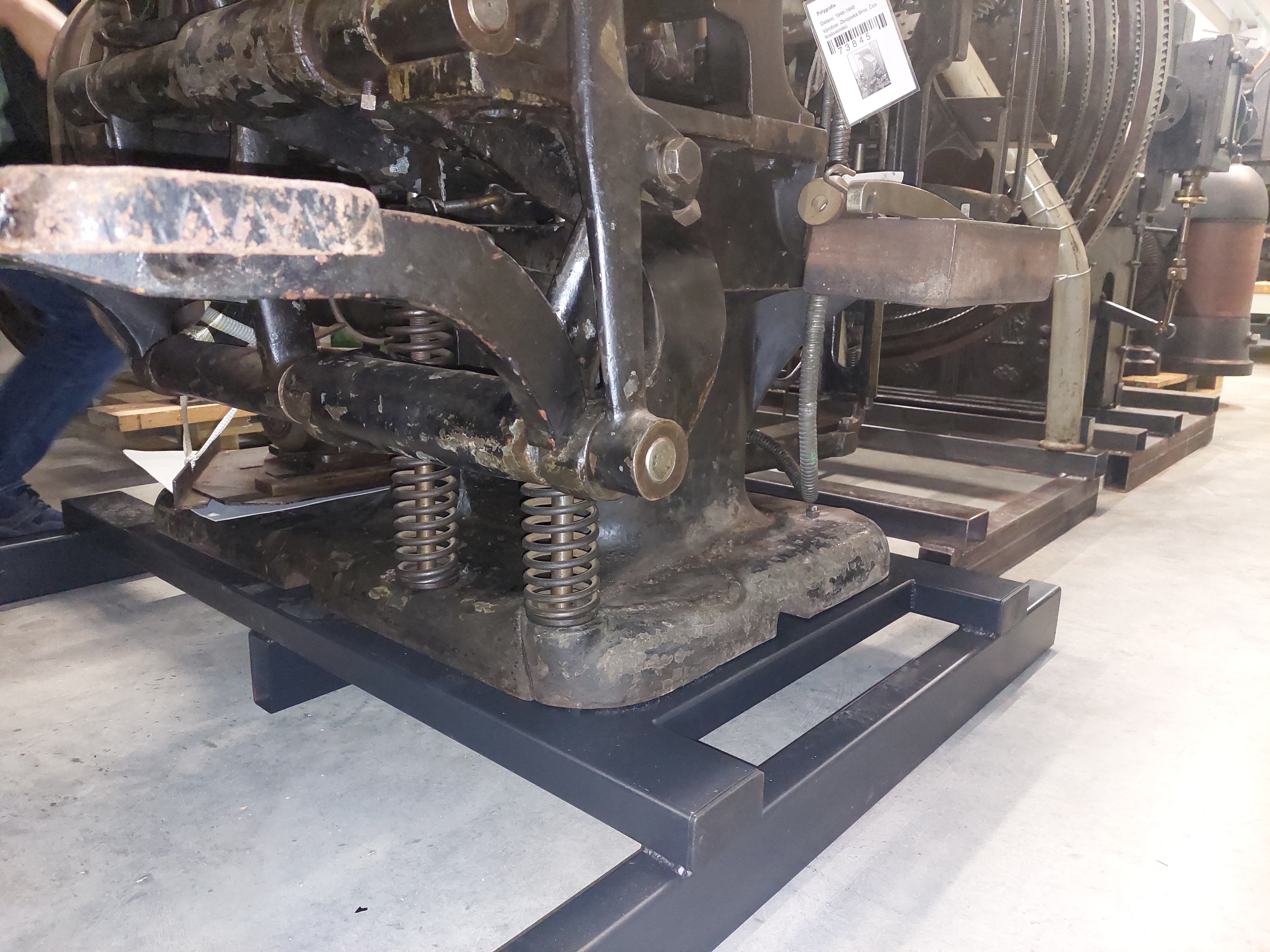
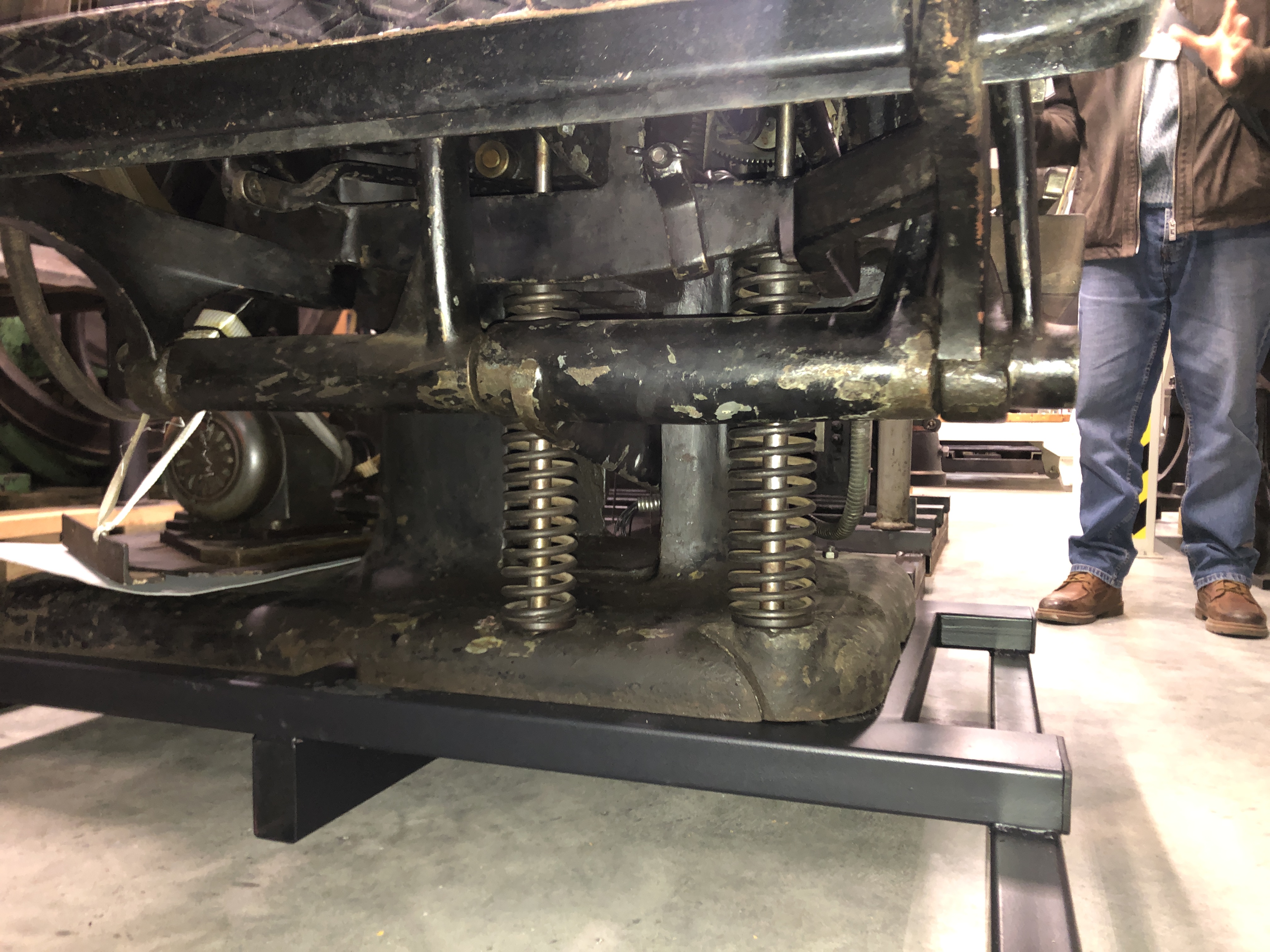
Photos: Details of the Zetotype machine. Property of the National Technical Museum, Prague, Czech Republic, Museum of Electrical Engineering and Media. Images subject to agreements, no reproduction allowed.
This prototype shows traces of usage. Therefore, it can be assumed that the machine was used in a production environment. The machine is in storage and its working cannot be tested. However, it is in a good state, and it seems that it is a solid machine to work on. A pitty thus that it never was commercially available. The company however did put attention to its presentation. It has a distinctive logo on the top, and an ultra-rare official advertention for the Zetotype illustrated below seems to have been a preparation for a later advertising campaign that never saw the light of day.
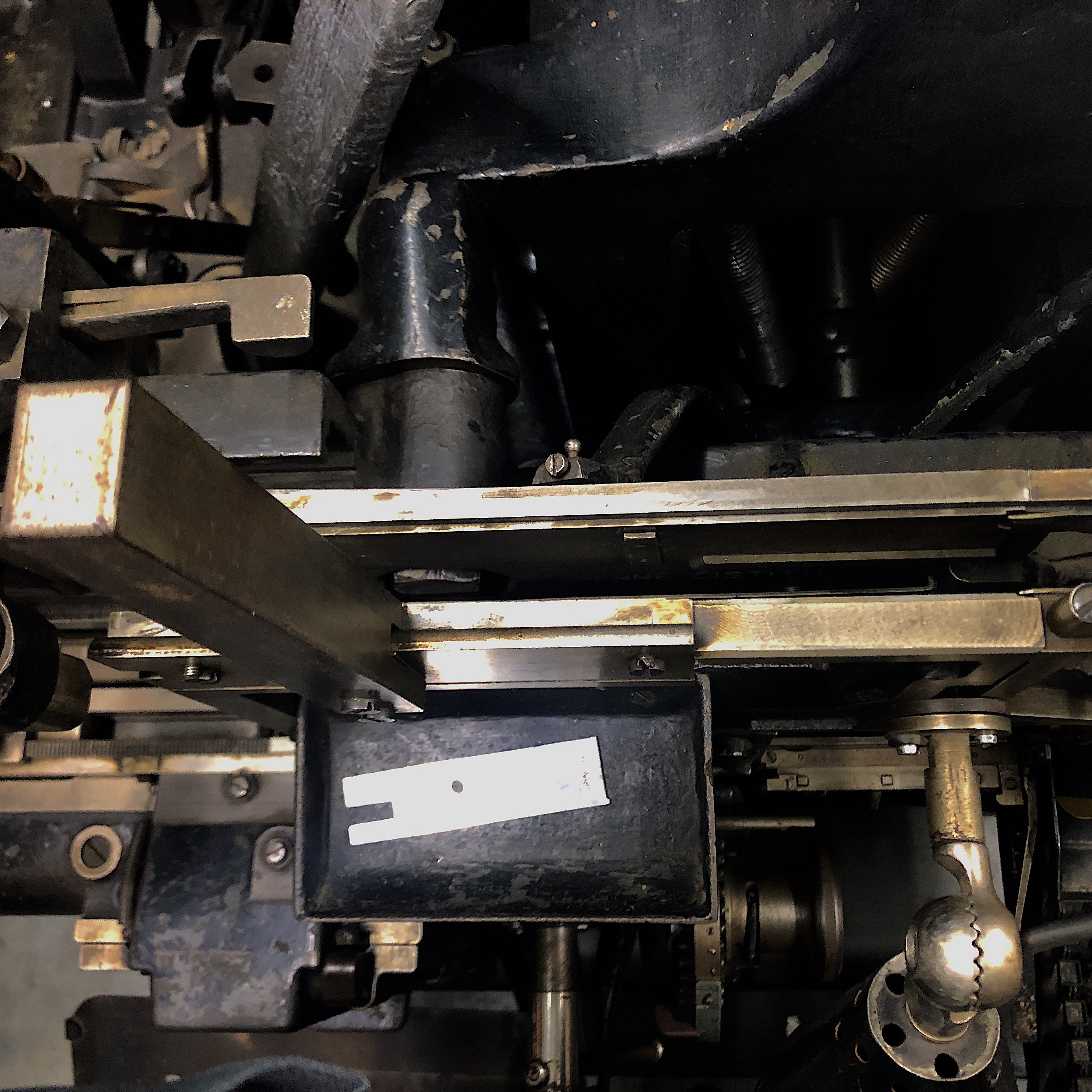
Photo: Traces of usage on the Zetotype. Property of the National Technical Museum, Prague, Czech Republic, Museum of Electrical Engineering and Media. Images subject to agreements, no reproduction allowed.
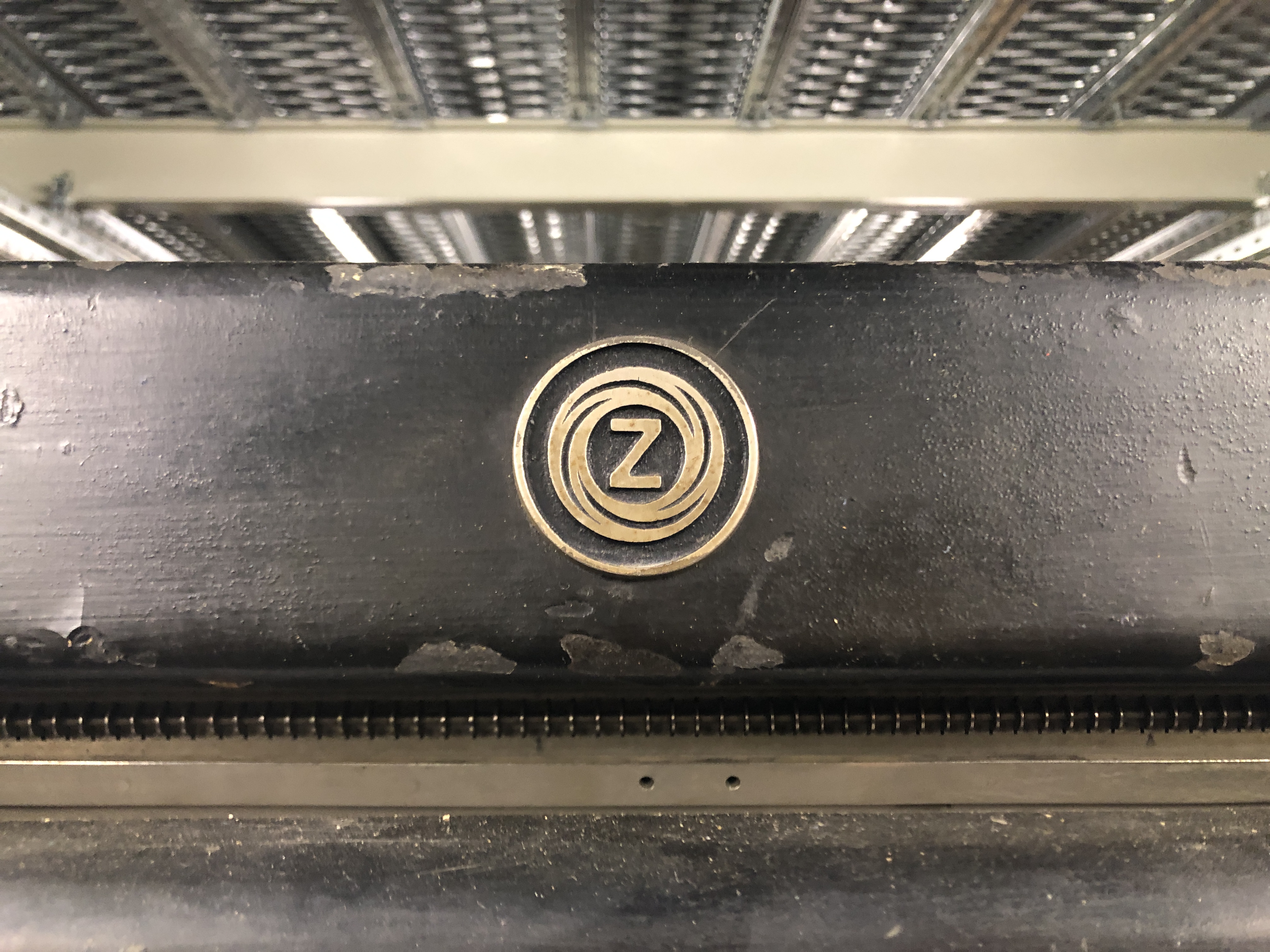
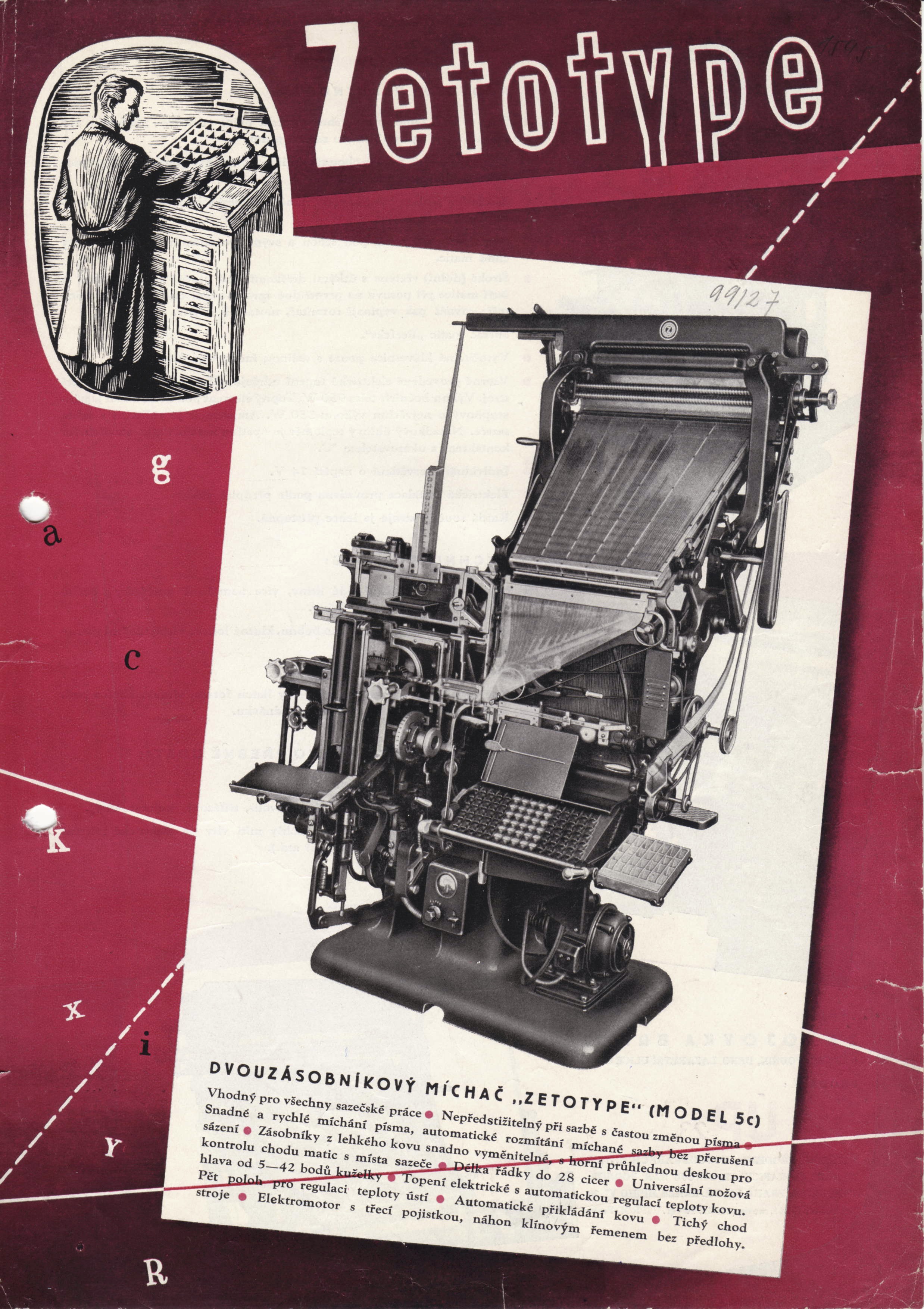
Figure: The distinctive top logo and the advertising leaflet for the Zetotype typesetting machine. Property of the National Technical Museum, Prague, Czech Republic, Museum of Electrical Engineering and Media. Images subject to agreements, no reproduction allowed.
This prototype came to the National Technical Museum of Prague via the book museum in Žďár nad Sázavou (Pohlreich & Vránková, 2018). The machine is currently in storage and not shown to the public.
The name 'Zeto' does not mean anything for as far as known. The company used this prefix for other machines as well; they had the 'Zeto', a type machine, and the 'Zetapress', a platenpress that was later called the 'Grafopress'
We would like to thank to the National Technical Museum for allowing us to film in the collections of the National Technical Museum.
C 2021-2024 Maarten Renckens and other contributors. All rights reserved. All materials on this website are available for non-commercial re-use, as long as the original author is mentioned and a correct reference to this site is added. Thanks!
All materials are considered copyrighted by the author(s) unless otherwise stated. Some materials from other sources are used. If you find materials on this page which you consider not free from copyright, a notification is appreciated.
All collaborations and additional sources are more than welcome. Please contact info@maartenrenckens.com if you have materials that you deem valuable.